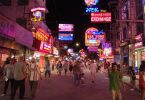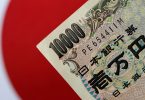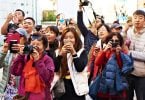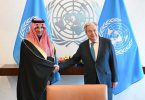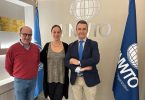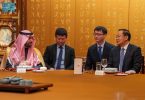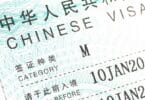Professor Tomohiko Taniguchi is on a tour of Europe in his role as Japan’s “Kizuna Ambassador” to speak about his country’s recovery after the great East Japan earthquake. He is keen to highlight not just the domestic management of the recovery but also how countries such as the UK, US, and Australia have been involved in the process.
In a lecture at the Japanese Ambassador’s residence in London on a glorious spring day, Professor Taniguchi conveyed an appropriate message of hope. Yes, the scale of the tragedy, loss of life and devastation in northeastern Japan, especially the Sendai region, just over a year ago, had left deep psychological scars on the whole country, but there had also been a significant and positive outcome. The outpouring of support and sympathy from across the world brought a sense of optimism to Japan’s traumatized population.
The US, Australia, and the UK were at the forefront of relief efforts. They were the first to send search and rescue teams, much-needed expertise, and supplies to the stricken areas. Other assistance came from countries as diverse as India, Israel, and Iran. People in Japan were particularly moved by sympathy from poorer nations, like Afghanistan, no stranger to tragedy itself. In one case, in the remote Afghan town of Bamiyan, where the Taliban had destroyed historic statues of the Buddha, impoverished schoolchildren put up a banner expressing their sorrow at the suffering of quake victims in Japan. Professor Taniguchi said as a result of this widespread sympathy and support, Japan’s bonds with the outside world had emerged stronger than ever.
Apart from his current academic posts, Professor Taniguchi was Deputy Press Secretary/Deputy Director-General for Public Diplomacy at the Ministry of Foreign Affairs between 2005-2008 and regularly wrote foreign policy speeches for the foreign minister and prime minister. He spoke eloquently and frankly about Japan’s recovery from what he described as the “triple disaster of the quake, tsunami, and nuclear fiasco.”
Referring to the damage to the nuclear plant in Fukishima, Professor Taniguchi said: ”The world should not fear so much; the level of radiation in Tokyo has been stable and is now even lower than in the center of Paris. Air passengers are routinely exposed to higher levels of radiation. According to the Tohoku University in Sendai, there is no continuing threat.” He said important lessons had been learned. He admitted that many Japanese had lost confidence in the authorities over the initial lack of clear information about the extent of the damage at the Fukushima plant. In his view, Japan in the foreseeable future would have to rely on nuclear power to meet its energy demands but safeguards would have to be strengthened.
As far as the rest of the country was concerned, Professor Taniguchi emphasized that it was business as usual; he saw no reason for tourists or investors to be concerned. Tourists could travel to most areas without fear of any residual effects of the disaster. “All places are safe except the no-entry zone in the area immediately affected. Hiraizumi, in Iwate prefecture, designated a world cultural heritage, barely sustained any damage despite being located in the quake-hit zone. All popular places like Tokyo and Kyoto are safe. The British embassy says it’s okay. The US ambassador in Japan has been tweeting about how safe it is to be in Japan.”
Professor Taniguchi acknowledged that in the early stages of the disaster there had been some criticism of western coverage – horrifying and sensationalized images left the lasting impression that Japan was in serious danger and gave an erroneous impression that conditions were not conducive to serious business in Japan. At the same time, the Professor noted that the head of CNN in Tokyo was one of the first to rush to the scene immediately after the earthquake and tsunami. Other international reporters were also there even before members of the Japanese media hit the road.
Were there any misconceptions? “Fears of contaminated food were exaggerated. The hardest hit area has been evacuated, so, for example, you cannot have beef from there. However, the affected region is relatively small and does not represent the whole country.”
In conclusion, Professor Taniguchi said he was pleased that as a result of the tragedy the Japanese have become more integrated as a nation and have not closed their minds to the outside world. “People have become more united emotionally and have tended to encourage each other. Social media has made a big difference in fostering this sense of solidarity, along with support from overseas Japanese and the international community.”
How can a nation hold itself together after a disaster in which 19,000 lives were lost and 300,000 homes destroyed or damaged? The world was touched and impressed at the way Japan pulled together as a nation after the tragedy. As Professor Taniguchi made it clear, it will be a long journey, but a year on, Japan is healing and is well on the road to recovery, helped along the way by goodwill from abroad.




